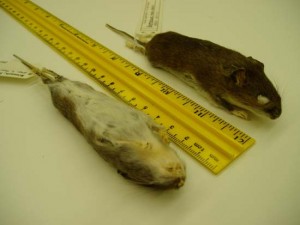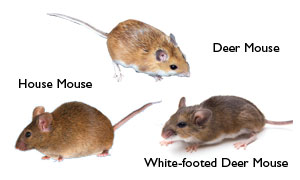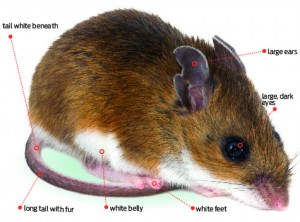MN Mice, Deer Mice & Rodent Control
Cooler weather is upon us which means a season of unwanted guests. It’s the time of year that mice and rodents tend to make an appearance inside homes. Like bugs, house mice and deer mice are seeking out a warm place to live for the winter. The deer mouse came to the attention of the public when it was discovered to be the primary reservoir species for hantavirus and other diseases.
Why should you care whether you are dealing with a deer mouse or house mouse? In one word: Disease! Field mice are vectors of serious, potentially fatal human diseases.
A recent study in British Columbia, of 218 Deer mice showed that 30% (66) were seropositive for B. burgdorferi, the agent of Lyme disease. Ehrlichiosis and babesiosis are also carried by the deer mouse.
A Mouse Is a Mouse…Right? Not So Much!!!
Often, you don’t know whether you are dealing with house mice or deer mice.
To a homeowner, a mouse is a mouse. Seeing a scurrying little rodent dashing across his or her kitchen floor elicits disgust and an immediate response is to call a pest control professional. However, it is important to distinguish between deer mice and common house mice. Because their biology and behaviors are different, the controls and tactics used by pest control professionals to resolve these rodent infestations are different as well.
The deer mouse, Peromyscus maniculatus, is in a completely different family than the house mouse, Mus musculus. The white-footed mouse, Peromyscus leucopus, is closely related to the deer mouse with similar appearance and habits. The deer mouse is found throughout most of Canada and the United States, with the exception of the southeastern U.S. Instead, the white-footed mouse occupies much of this region.
They are also accomplished jumpers and runners by comparison to house mice, and their common name of “deer mouse” (coined 1833) is in reference to this agility. They are much more energetic rodents compared to the relatively tame house mouse.
Physical Characteristics. The deer mouse and the house mouse are roughly the same size, but most people think the deer mouse is “cuter” with its large eyes and ears and two-tone fur. It gets its name because its coloration resembles that of the white-tailed deer — gray or tawny brown above and white below. The photo points out deer mouse features that are different from those of the house mouse.

Note: While the back and sides of the deer mouse can vary in shades of gray and brown, it should have a white belly. Note the bicolored tail of the deer mouse – the house mouse has a mono-color tail.
The deer mouse, and sometimes the white-footed mouse, are the mice primarily responsible for transmitting Hantavirus to humans. The virus is found in the saliva, urine and feces of these mice. It is spread to humans mostly when airborne virus particles are inhaled. Human cases occur in sites that have large populations of Peromyscus mice with dusty accumulations of droppings and urine that become airborne when disturbed.
Infestations of the mild-mannered house mouse are often handled by the same pest control professional who deals with box elder bugs, ants, and other insect infestations. Deer mice infestations, on the other hand, are a completely different ballgame. Their behavior, nesting habits, and reproductive cycle are completely different.
If you suspect a mouse or deer mice infestation in your home, don’t wait. Call a professionals Minnesota Wild Animal Management Expert to come out and inspect your home. They can identify what type of rodents you may have, eliminate and sanitize any infestation, and take preventative steps to ensure your home is pest free as well repair any of the damage they may have caused.






